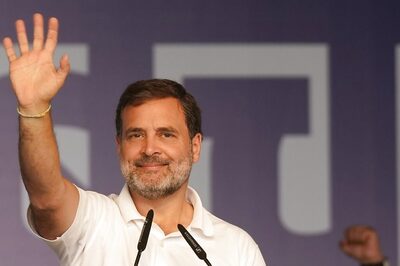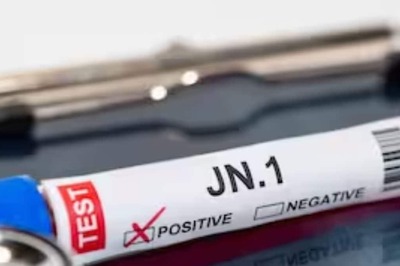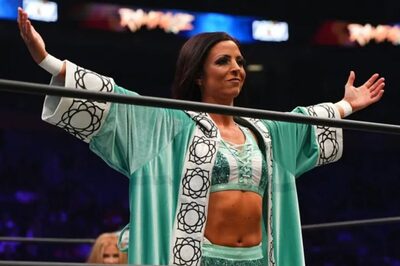
views
Whenever the United States-led Anglosphere sees a potential threat to its global hegemony, it acts swiftly and ruthlessly.
Germany was a growing threat in 1914. By 1945, two world wars later, Germany was neutralised. After nearly 80 years, it remains an obedient ally of the US.
Japan received the same treatment, though it took two atomic bombs and over 2,50,000 lives to end Japan’s military threat in the east.
The Soviet Union posed a tougher challenge. It controlled over a dozen European countries right up to the doorstep of (then) West Germany. It took the US 40 years to dismantle the Soviet threat to its global hegemony.
Having dismembered former Soviet satellites like Yugoslavia into several small separate countries, the US enjoyed a brief moment of being the world’s only superpower between 1990 and 2010.
China’s rise came as a rude shock. Beijing had followed President Deng Xiaoping’s advice: hide your strength, bide your time. For 30 years from the 1980s to the 2010s, China quietly stole US military technology from under the Pentagon’s nose and deeply infiltrated Silicon Valley.
President Xi Jinping’s aggression in the South China Sea woke Washington up. China was not just a military threat as the former Soviet Union had been. It was a far more serious economic threat than the Soviets had ever been.
Washington moved quickly, lockstep with its Anglophone cousins — Britain, Canada, Australia and New Zealand — to thwart China’s rise.
President Donald Trump imposed far-reaching trade sanctions on Beijing which President Joe Biden has deepened. When faced with a foreign challenge, US Democrats and Republicans, sharply polarised over domestic politics, have an uncanny ability to join forces.
Biden doubled down on Trump’s trade war against China by imposing wide-ranging technology sanctions on Beijing. He banned Western, Japanese, Korean and Taiwanese companies from sharing advanced semiconductor technology with China.
Since China no longer has access to the latest wafer-thin chips from Nvidia and other Western firms, it will take years to catch up on new-generation chips in mobile phones, cars, computers and AI-powered electronic devices.
Hegemony birthright
British Prime Minister Winston Churchill used to say that the English-speaking nations (known today more commonly as the Anglosphere) had prevailed in the social Darwinian battle.
According to Churchill, white Christian Protestants occupied the top rung in the hierarchy. In the second tier were white Christian Catholics. Then came Indians and Chinese and in the fourth tier Africans.
Churchill, an amateur historian himself, knew that his social Darwinism theory was drivel. Before 1700, Britain was a mid-level European country in awe of the Ottoman and Mughal Empires.
British envoys like Sir Thomas Roe were for years denied an audience in the 17th-century Court of Emperor Jehangir.
The Chinese were more direct, sending back British envoys with a threat of beheading if they retuned.
Churchill also knew that a rare combination of science, slavery, industry and invasive colonialism had elevated Britain to a global hegemon by the mid-1800s. Social Darwinism had little to do with it.
The hegemonic baton passed from Britain to its colonial cousin America around 1900. There it has stayed for over a century.
Reining in China remains a work in progress. Hawks in Washington believe China’s moment has come and gone. Expected to surpass US GDP by 2030, they now believe China may never catch up, allowing the US to be the largest global economy for the foreseeable future.
The problem with that thesis is that the future is unpredictable. International financial institutions have warned that India could overtake both the US and China as the world’s largest economy sometime between 2052 and 2075.
US vs China vs India
The Anglosphere has held global hegemonic power for 200 years since the defeat of French Emperor Napoleon by the British at Waterloo in 1815.
Farsighted American policymakers have sought for years to draw India into its Anglospheric orbit as it did with Japan and South Korea.
Xi Jinping, alive to the US ploy, met Prime Minister Narendra Modi for three congenial summits between 2014 and 2019 – in Ahmedabad, Wuhan and Mahabalipuram – to wean India away from the US.
The deal Xi offered was peace and tranquillity along the LAC in return for India’s geopolitical equidistance from the US and China.
But China is a ruthless power itself. At the very first Modi-Xi summit in Ahmedabad in 2014, the PLA made an incursion across the LAC. It took a quiet but firm word from Modi to Xi to order the PLA back.
China increased the pressure on India in 2017 with the Doklam standoff that lasted over 70 days.
Despite his misgivings over Beijing’s intent, Modi met Xi again for an informal summit in Wuhan in 2018, followed by another in Mahabalipuram in 2019.
By now Modi had gauged Xi accurately: he was not to be trusted. India deepened its relationship with the US, Australia and Japan in the Quad.
China took the gloves off. The April 2000 incursion across the LAC followed.
The Galwan Valley clash took the lives of 20 Indian soldiers and an estimated 45 PLA troops (though China has admitted to losing only four soldiers).
Galwan ended India’s brief dalliance with China. Washington was pleased. Over the last four years, it has elevated its relationship with India to a strategic partnership and signed a slew of agreements on sharing critical technologies as well as joint defence production.
It’s conditional
But — and there is a but — nothing the US and its Anglospheric allies do comes without riders.
India presents the Anglosphere with an unusual problem. It is not communist like the Soviet Union was or China is. It is a former colony, poor, noisy and democratic.
It is also independent-minded. New Delhi’s neutral position on Ukraine annoys Washington. India’s leadership of the Global South is another irritant.
Washington welcomes India’s economic rise and growing military strength. But it knows that India needs to be periodically reminded of who calls the shots.
Britain, Canada, Australia and New Zealand in consonance ensure that India stays just a little off-balance with well-timed pinpricks.
Since Independence in 1947, it was Britain’s job among the Anglophones to back Pakistan against India. The US played a particularly toxic role in the 1971 Bangladesh war.
India’s economic and military rise makes such geopolitical blackmail impossible today.
The US knows that by 2050 it will be a white-minority country. Blacks, Hispanics and Asians will be the majority, with white Protestants of European descent dropping to below 25 per cent of the US population and white Catholics to 20 per cent.
History turns in circles. American and British policymakers know what their countries were in 1700.
The US did not exist as an independent nation. Neither did the UK. It was only in 1707 that the kingdoms of England and Scotland merged to form the United Kingdom.
Anglospheric hegemony came a century later. It could end within decades.
The writer is an editor, author and publisher. Views expressed in the above piece are personal and solely that of the author. They do not necessarily reflect News18’s views.




















Comments
0 comment